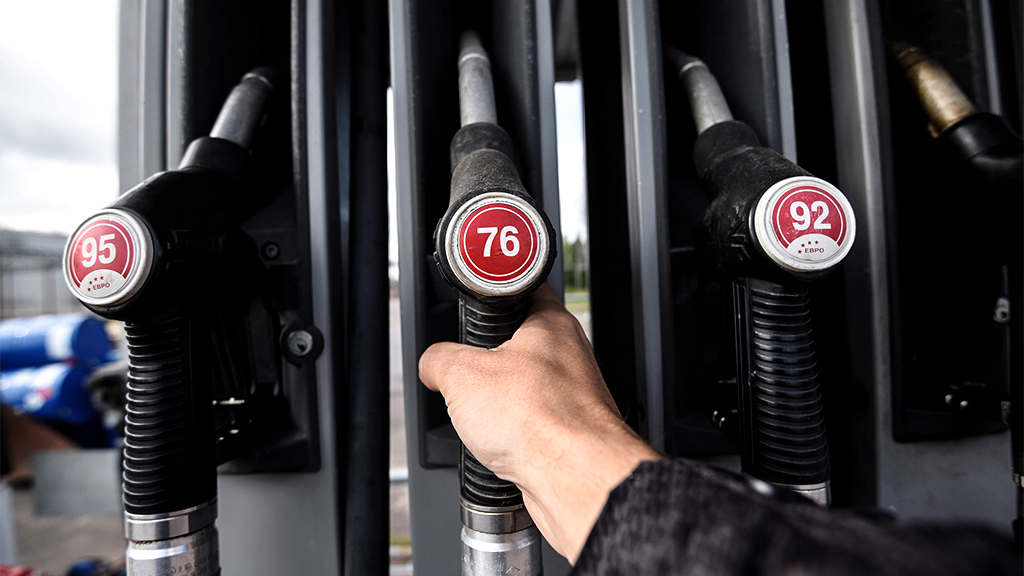China has saved a remarkable $20 billion since 2022 by significantly increasing its purchases of Russian oil, replacing supplies from Middle Eastern competitors. This assessment was made by Igor Sechin, who oversees the development of the fuel and energy sector in Russia. Russia has now become the number one supplier to China. While Middle Eastern countries may not be displeased, how is Beijing bolstering its economy?
Over the past decade, Russia has effectively reoriented itself towards the East, becoming the top oil supplier to China with a market share of around 20%, stated Igor Sechin, the Chairman of Rosneft and the Secretary of the Russian Presidential Commission on Strategic Development of the Fuel and Energy Sector.
The higher efficiency of purchasing Russian oil compared to Middle Eastern alternatives has resulted in an estimated economic benefit of approximately $20 billion for China since 2022, Sechin announced at the Russia-China Energy Business Forum.
Consequently, after 2022, Beijing has made oil imports more economically efficient, in stark contrast to the European Union, which has seen a decline in import efficiency. This stands as one of the critical competitive advantages for the Chinese economy as a whole, especially in comparison to the competing European economy.
A similar scenario is observed in the electricity sector. In both Russia and China, electricity costs are more than twice as cheap as in the United States, and three to four times lower than in several EU countries, Sechin emphasized. This fundamental factor enhances the competitiveness of both economies. The reason lies in China's less abrupt approach to coal phase-out compared to the EU, while actively developing renewable energy sources. Beijing understands that replacing something old requires first creating something new.
Russia and China are also expanding their cooperation in the gas sector. Russia holds over 20% of the Chinese gas import market, making it one of China's key partners in energy security. A fifth of the gas imported by China originates from Russia, noted Sechin. China aims to make gas supplies more efficient, which prompted it to start purchasing Russian sanctioned LNG this year. According to unofficial sources, discounts on this LNG reach 20-30%, giving Beijing a significant economic benefit and positioning it favorably on the global economic stage.
The economic benefit for China from purchasing Russian oil since 2022 is particularly interesting to calculate. It likely stems from the price differential between Russian Urals and North Sea Brent crude. Russian sanctioned oil is available to China at a lower cost, which contributes to the savings. "For the entirety of 2024 and a significant part of 2025, the price differential between Urals and Brent was around $12-13 per barrel. It's possible that this price difference and the volume of oil we delivered to China via sea were used to calculate the savings. The discount on oil flowing from Russia through pipelines is much lower, only a couple of dollars. Thus, the discussion revolves more around Urals oil delivered by sea," explains Igor Yushkov, an expert at the Financial University under the Government of the Russian Federation and the National Energy Security Fund.
"Prior to 2022, China was already the largest buyer of Russian oil if we were to consider statistics by individual countries. However, collectively, EU countries purchased more than just China. After 2022, however, the PRC began to significantly increase its oil imports from Russia. Whereas before, this was predominantly oil from ESPO and Sakhalin varieties delivered via pipelines through Kazakhstan and to the port, post-2022 there has been a rise in shipments of Urals oil by sea from western ports—Novorossiysk and the ports of the Leningrad region," notes Yushkov.
Russia has displaced primarily Middle Eastern suppliers such as Saudi Arabia, Iraq, and producers from Africa in the Chinese market. They have dropped to lower rankings of suppliers, conceding the leading position to Russian deliveries, remarks Yushkov. The same dynamics are observable in the Indian market. However, it is unlikely that the Middle Eastern partners are displeased with Russia, as they have gained access to the European market and continue to earn as before, Yushkov believes.
"Oil exports from Russia to China increased from 12.8 million tons in 2005 to 108.5 million tons in 2024, with Russia's share in the structure of Chinese imports rising from 10% to 20%, respectively.
In comparison, Saudi Arabia, the second-largest importer, accounted for 14% last year, while Malaysia's share reached 13%," notes Sergey Tereshkin, CEO of Open Oil Market.
He adds that just in 2021, Malaysia's share of China's oil imports was only 4%, but by the end of 2024, it rose to 13%. This increase is attributed to shipments of sanctioned Iranian oil. "Over two-thirds of Malaysia's shipments consist of Iranian oil that finds its way to the Chinese market transit through Malaysian ports. This surge in share was linked to the easing of sanctions monitoring that occurred in 2022 as the Biden administration sought to smooth out fluctuations in oil prices," Tereshkin explains.
"Post-2022, China has ramped up its purchases of sanctioned oil. It had already been sourcing Iranian and Venezuelan oil, which are under sanctions, and subsequently increased its purchases of sanctioned Russian oil. As a result, the share of what is known as discounted oil significantly grew in China's fuel balance," says Igor Yushkov.
Russian oil is more cost-effective for China—this is its primary efficiency benefit.
"The average price for oil shipments from Russia to China in 2024 was $574 per ton, while from Saudi Arabia, it was $609 per ton. In 2021, Russian oil, conversely, was the most expensive:
509 dollars per ton compared to 502 dollars per ton for Saudi oil and 479 dollars per ton for Malaysian (essentially Iranian) oil," emphasizes Tereshkin. Furthermore, Iranian oil transiting through Malaysia to China often costs even less than Russian sanctioned oil.
Simultaneously, Russia and China have expressed their readiness to expand cooperation. Chinese President Xi Jinping emphasized that China is willing to collaborate with Russia to continually strengthen their comprehensive energy partnership.
According to Sechin, over the next five years—by 2030—China is expected to increase its oil imports by an additional 1.4 million barrels per day, as evidenced by forecasts from global analytical agencies. The growth points for global oil consumption are primarily located in the Asia-Pacific region, especially in China, he highlighted.
Regarding the gas market, redirecting lost export volumes from Europe to China has proven challenging, as it requires building infrastructure, which needs to be preceded by long-term contracts, remarks Yushkov. Consequently, Russia had to cut back on gas production.
The increase in gas supplies via Power of Siberia 1 is a planned growth outlined in the contract signed long before 2022— in the spring of 2014. Currently, discussions around expanding cooperation encompass signing an agreement for gas supplies via Power of Siberia 2, as well as increasing LNG shipments to China. Notably, Beijing has begun purchasing sanctioned LNG from the Arctic LNG 2 project this year, with discounts that, according to unofficial information, may reach 20-30%. This too allows Beijing to save significantly.
Source: VZGLYAD




